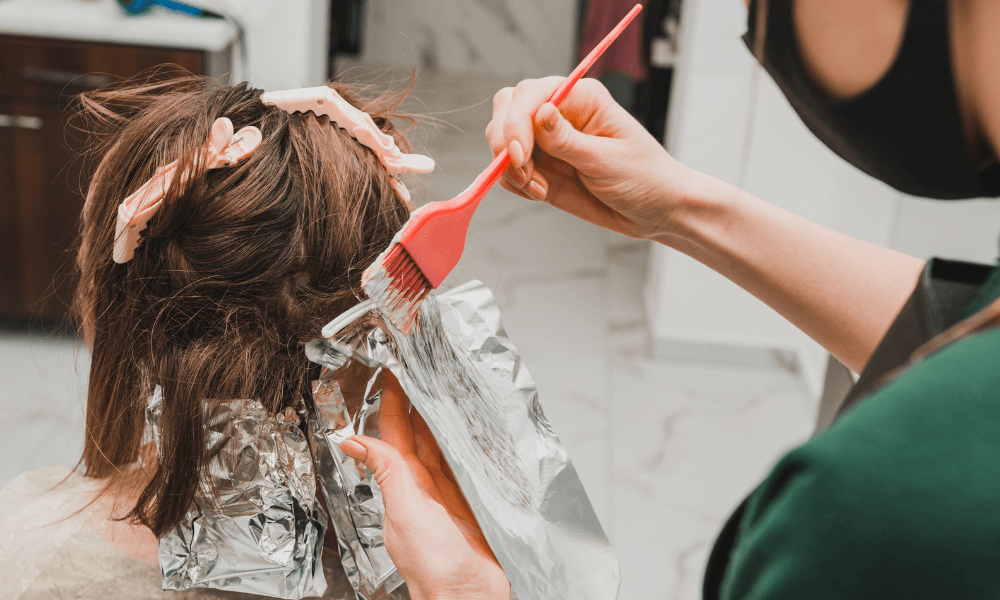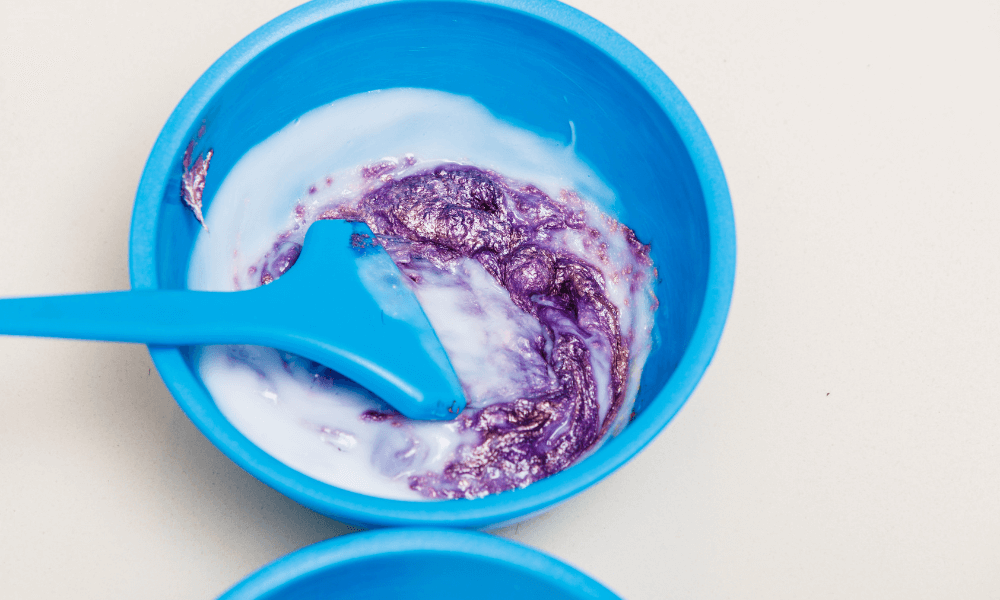Can You Bleach Wet Hair? Expert Tips and Precautions
Bleaching Wet Hair: A Comprehensive Guide
Regarding hair transformations, bleaching is widespread for those looking to lighten their locks. However, a common question is, Can you bleach wet hair? Are you planning to bleach your wet hair? If so, knowing the process, potential risks, and safety precautions is essential. In this blog post, we’ll take a closer look at the pros and cons of bleaching wet hair and give tips on how to do it safely. Whether you’re a first-time bleacher or a seasoned pro, this article will teach you how to safely and successfully dye your hair the desired color.
Can You Bleach Wet Hair?

Before we delve into bleaching wet hair, let’s address whether you can bleach wet hair. The quick answer is yes, you can bleach your hair when it’s wet. However, it’s not the recommended method. Bleaching wet hair can lead to uneven results, as the excess moisture may dilute the bleach and make it less effective. To achieve the best results, working with dry hair is recommended. However, if you find damp hair and itching for a change, it’s still possible to bleach it—just be prepared for potentially unpredictable outcomes.
During the bleaching process, one common question arises: How long to bleach bleach in hair? The duration can vary depending on your hair type, the bleach used, and your desired level of lightness. It’s crucial to monitor the bleach closely and follow the recommended processing times provided by the bleach manufacturer.
Pros of bleaching wet hair:
- Faster processing time: Bleach processes more quickly on wet hair so that you can achieve your desired results in less time.
- Reduced damage: Wet hair is more elastic than dry hair, so it’s less likely to break during the bleaching process.
- Softer, more even results: The water in your hair dilutes the bleach, which can help to create smoother, more even effects.
Cons of bleaching wet hair:
- Less lift: Bleach doesn’t lift as much color on wet hair as on dry hair. This means that you may need to leave the bleach on for longer to achieve your desired results.
- More difficult to apply: Bleach can be more difficult to apply to wet hair, especially if you’re trying to achieve a precise look.
- Increased risk of irritation: Bleach can irritate your scalp, especially if you have sensitive skin. Wet hair is more likely to absorb bleach, so there’s a greater risk of irritation.
What Occurs When Bleach Is Applied to Wet Hair?
When applying bleach to wet hair, several factors come into play. First, the excess moisture on the hair can dilute the bleach, reducing its potency. This means that the bleach may take longer to lift the color from your hair or may not achieve the desired level of lightness. Additionally, the uneven distribution of bleach on wet hair can lead to patchy results.
Moreover, wet hair can be more fragile and prone to damage than dry hair. Combining bleach and moisture can weaken the hair structure, making it more susceptible to breakage. This is why it’s generally recommended to bleach dry hair for a safer and more predictable outcome.
How Long to Leave Bleach on Wet Hair: Expert Recommendations

Regarding bleaching wet hair, timing is crucial for achieving the desired results without causing damage. The optimal duration for leaving bleach on wet hair can vary based on several factors, including your hair type, current condition, and the bleach’s strength.
As a general guideline, most experts recommend leaving bleach on wet hair for no longer than 30 to 45 minutes. However, it’s crucial to monitor the process closely. Check your hair’s color and condition every 5 to 10 minutes. If you notice it reaching the desired shade or becoming overly processed, rinse it immediately to avoid damage.
Always follow the specific instructions provided with your bleach product, as they may vary between brands. Additionally, consider consulting a professional hairstylist for personalized advice, especially if you’re new to bleaching or have particularly delicate hair.
Also read: Does Toner Damage Hair?
How to Use Bleach on Wet Hair?

If you find yourself in a situation where you need to bleach wet hair, it’s essential to follow some guidelines to minimize the risks and improve your chances of success:
- Towel Dry: Gently towel dry your hair to remove excess moisture before applying bleach. Avoid vigorously rubbing your hair, as wet hair is more susceptible to damage.
- Use a Lower Volume Developer: Opt for a lower volume developer, such as 10 or 20, when bleaching wet hair. This will help reduce the risk of over-processing and damage.
- Monitor Closely: Keep a close eye on the bleaching process. Wet hair may process faster than dry hair, so check the color regularly to avoid over-bleaching.
- Hydrate and Repair: After bleaching wet hair, use deep conditioning treatments to restore moisture and strength to your strands. This will help mitigate any potential damage.
- Consult a Professional: If you’re unsure about bleaching wet hair or want to achieve a specific result, it’s always a good idea to consult a professional hairstylist.
Benefits of Bleaching Wet Hair
Bleaching wet hair may not be ideal, but it offers a few benefits for specific situations. One advantage is that the excess moisture can help dilute the bleach, potentially reducing the risk of over-processing, which is especially helpful for those with very dark hair. Also, bleaching wet hair might be preferred when dealing with sensitive or damaged hair. The added moisture can make the process gentler, minimizing the risk of excessive damage. However, it’s crucial to note that these benefits come with trade-offs, including the potential for uneven results. Careful consideration and professional advice are essential when opting for this method.
Also read: Is Salt Water Good for Your Hair?
Safety and Precautions

Whether wet or dry, bleaching hair should always be cautiously approached, here are some safety precautions to keep in mind:
- Patch Test: Perform a patch test to check for allergies or adverse reactions to the bleach.
- Ventilation: Ensure that the area where you apply bleach is well-ventilated to avoid inhaling fumes.
- Protect Your Skin: Wear gloves and protect your skin and eyes from contact with bleach.
- Follow Instructions: Always follow the manufacturer’s instructions for your bleach product.
- Limit Frequency: Avoid frequent bleaching, as it can lead to significant hair damage.
- Seek Professional Help: If you need clarification on the process or have concerns, seek the assistance of a professional hair colorist.
Also read: Can You Leave Conditioner in Your Hair?
Conclusion
In conclusion, while it is possible to bleach wet hair, there are better methods than this due to the potential for uneven results and increased risk of damage. If you find yourself in this situation, take the necessary precautions and consult a professional if you have any doubts. Achieving your desired hair color is possible, but it’s essential to prioritize the health and integrity of your hair throughout the process.
Remember that the key to successful hair bleaching is patience, care, and understanding your hair’s unique needs. Whether you bleach wet or dry hair, always prioritize your beautiful locks’ safety and long-term health.
(FAQs) regarding bleaching wet hair
1. Can you bleach wet hair?
You can bleach wet hair, but it’s not recommended for the best results. Damp hair can dilute the bleach and make it less effective, leading to uneven color and potential damage. It’s safer to bleach dry hair.
2. Is there a difference in the bleaching process for wet and dry hair?
Yes, there is a difference. Bleaching wet hair may require a lower volume developer and a shorter processing time. It’s essential to monitor wet hair closely to avoid over-processing.
3. What happens if you bleach hair that’s too wet?
If you bleach hair that’s excessively wet, the bleach may be diluted, resulting in uneven and unpredictable color. It’s essential to be careful with wet hair as it is more vulnerable to damage.
4. Can I use regular bleach on wet hair?
You can use regular bleach on wet hair. Still, using a lower volume developer and being vigilant during the process is recommended to prevent damage and achieve the desired result.
5. How long should I leave bleach on wet hair?
Apply bleach on hair for 20-45 minutes, depending on hair type and bleach used. For the greatest results, adhere to the manufacturer’s guidelines.
Sources:

Pingback: How Long To Leave Bleach In Hair?
Pingback: Why Do Salons Wash Your Hair After Coloring? - Hair Essentials Pro
Pingback: Is Salt Water Good For Your Hair?